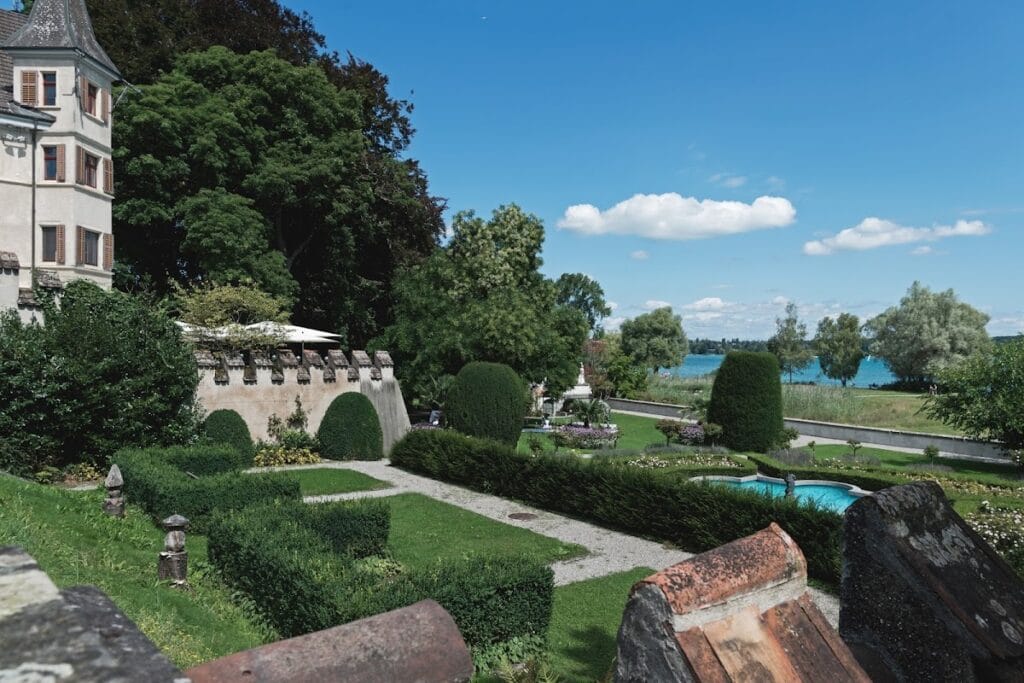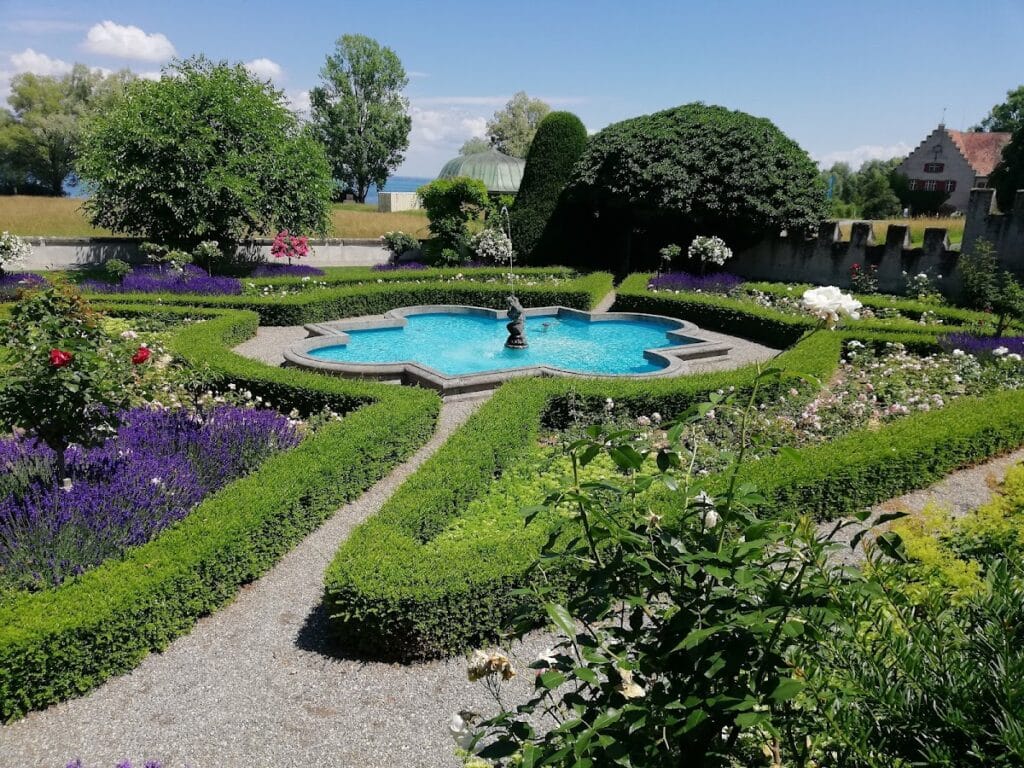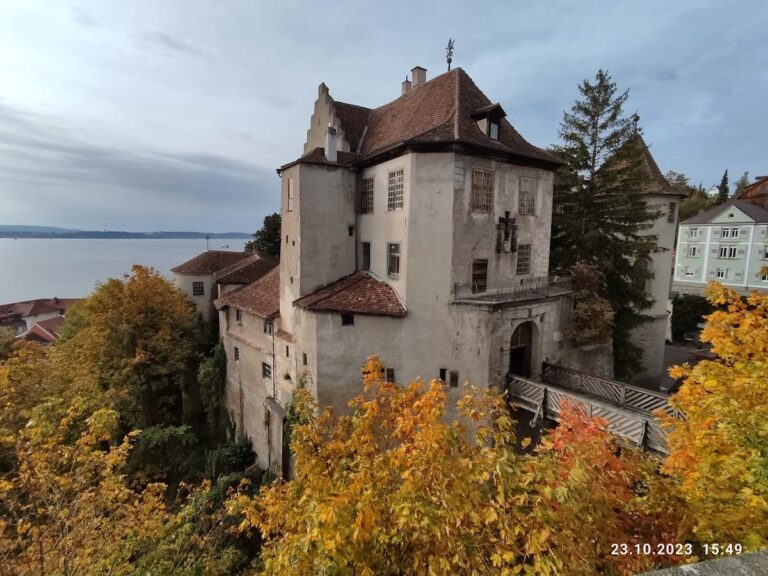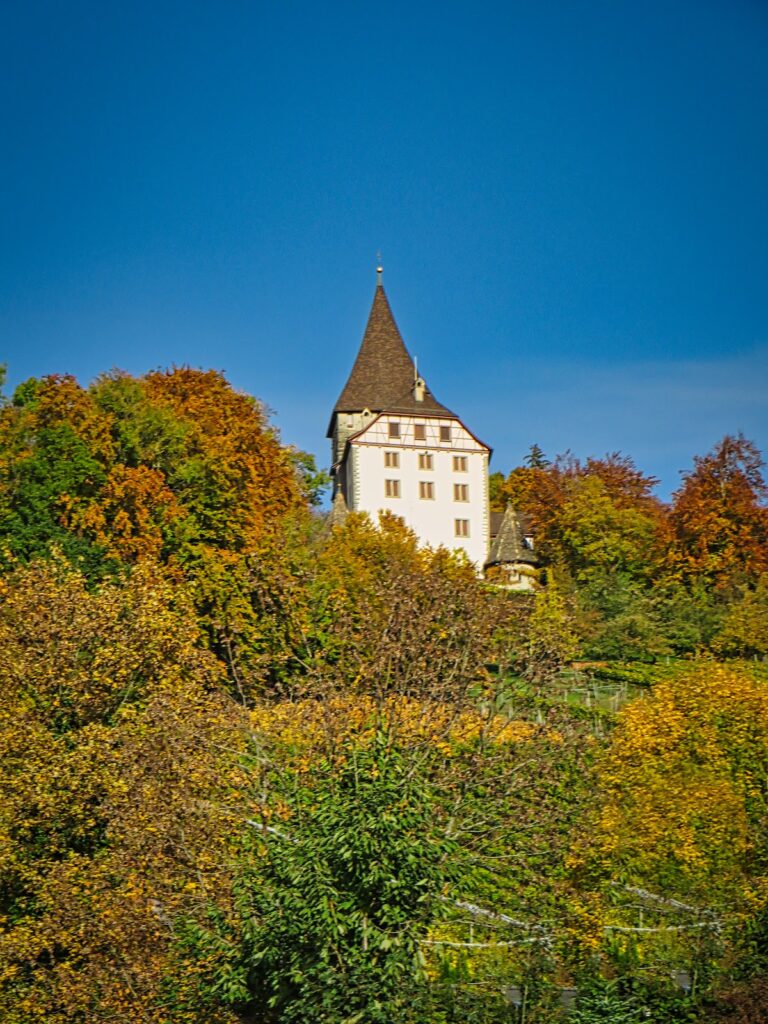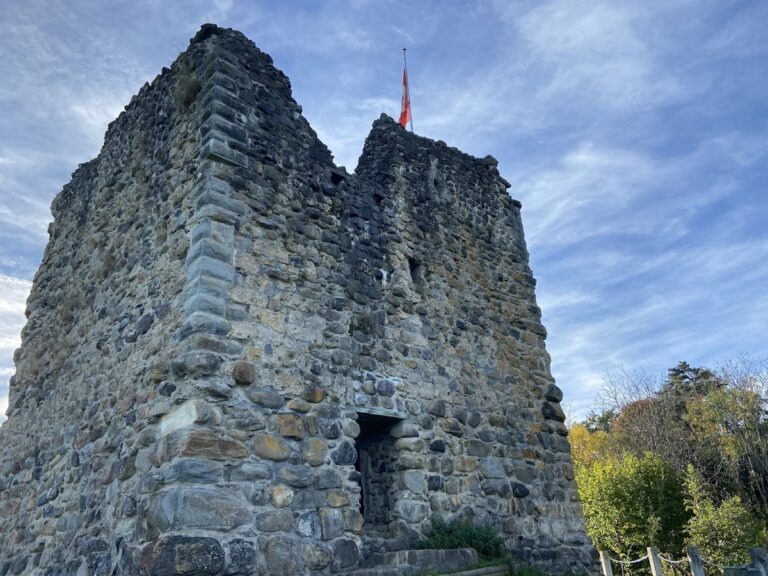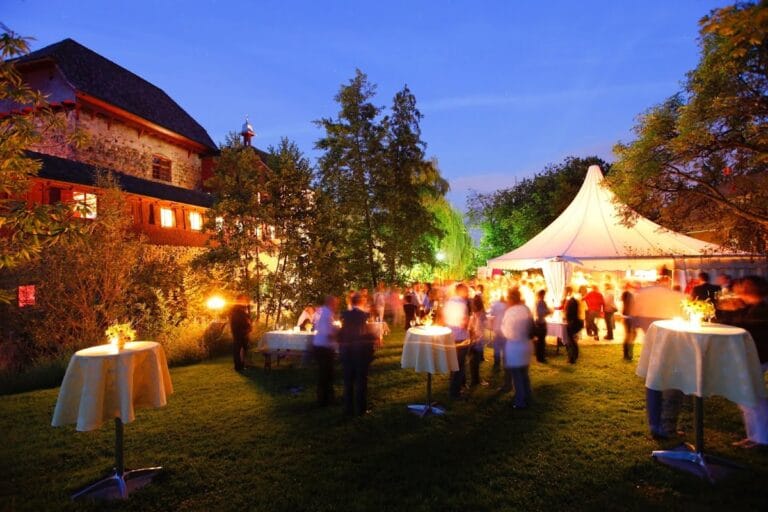Seeburg Castle: A Historic Site in Kreuzlingen, Switzerland
Visitor Information
Google Rating: 4.6
Popularity: Low
Official Website: schloss-seeburg.ch
Country: Switzerland
Civilization: Unclassified
Site type: Military
Remains: Castle
History
Seeburg Kreuzlingen is situated in the municipality of Kreuzlingen, Switzerland. The site originated under the influence of the local ecclesiastical authorities connected to the Kreuzlingen Augustinian monastery.
The earliest known structure at this location was a small manor called Neuhorn, constructed in 1598 by Jakob Atzenholz-Zollikofer from Konstanz. It functioned as a summer residence for the abbots of the nearby Augustinian monastery. However, this initial building was destroyed in a fire in 1633. Three decades later, in 1664, Abbot Augustin I. Gimmi oversaw the rebuilding of the manor. The new structure was modest, featuring a simple cubic form with a gabled roof and enclosed by a square wall, reflecting its practical purpose within the monastic estate.
Starting in 1833, the building took on an educational role as it housed the Thurgau teacher training seminary, with Johann Jacob Wehrli appointed as its first director. Following the dissolution of the Kreuzlingen monastery in 1848, ownership transferred to the canton of Thurgau. The seminary eventually moved to a different location in 1850, and the property was sold two years later.
A significant transformation occurred in 1870 when architect Ernst Jung from Winterthur redesigned the structure into a historicist castle, a style popular in the 19th century that sought to revive elements from earlier architectural periods. This remodeling was carried out by Gottfried Ferdinand Amman. Later on, between 1894 and 1895, the castle’s surrounding park was landscaped under the direction of August Amman, son of Gottfried Ferdinand.
Ownership of Seeburg Castle passed through the Amman family until 1958, when a narrow public vote resulted in the city of Kreuzlingen acquiring the property. In the early 1980s, the castle underwent extensive renovation to restore and preserve the structure under the guidance of architect Ernst Oberhänsli, with supervision by cantonal monument conservator Jürg Ganz. Up until the 1960s, the castle stood on the immediate shore of Lake Constance; however, a land reclamation project moved the shoreline further away. Since 1993, the building has been utilized as a restaurant, and since 2016, all the castle’s rooms have served culinary and event purposes. Today, Seeburg Castle is recognized as a site of national significance in Switzerland’s cultural heritage.
Remains
The site of Seeburg Castle presents a layered history visible in its architectural form and surrounding grounds. The earliest surviving structure dates from the 17th century, characterized by a straightforward cubic design topped with a gabled roof. This construction was enclosed within a square wall, creating a defined perimeter likely serving both residential and protective functions for the abbots’ summer retreat.
The current castle form largely reflects the historicist remodeling completed in the late 19th century, which transformed the simple manor into a more ornate and stylistically complex building. This redesign emphasized elements drawn from earlier architectural traditions popular during that era. The castle is embedded within a landscaped park originating from the same period, laid out by August Amman. The grounds complement the building by providing a carefully designed natural setting that enhances its appearance and historic character.
Significant changes to the castle’s environment include the movement of the lakeshore during the 20th century. Until the 1960s, the castle’s walls were directly adjacent to the waters of Lake Constance. After land reclamation efforts, the shoreline was extended outward, altering the relationship between the building and the lakefront.
In the early 1980s, the castle underwent thorough restoration work aimed at preserving its architectural integrity. This effort was overseen by architect Ernst Oberhänsli with support from Jürg Ganz, a specialist in monument conservation. The restoration preserved the castle’s historic features while ensuring its structural soundness, allowing it to continue serving modern functions without compromising its heritage status.
